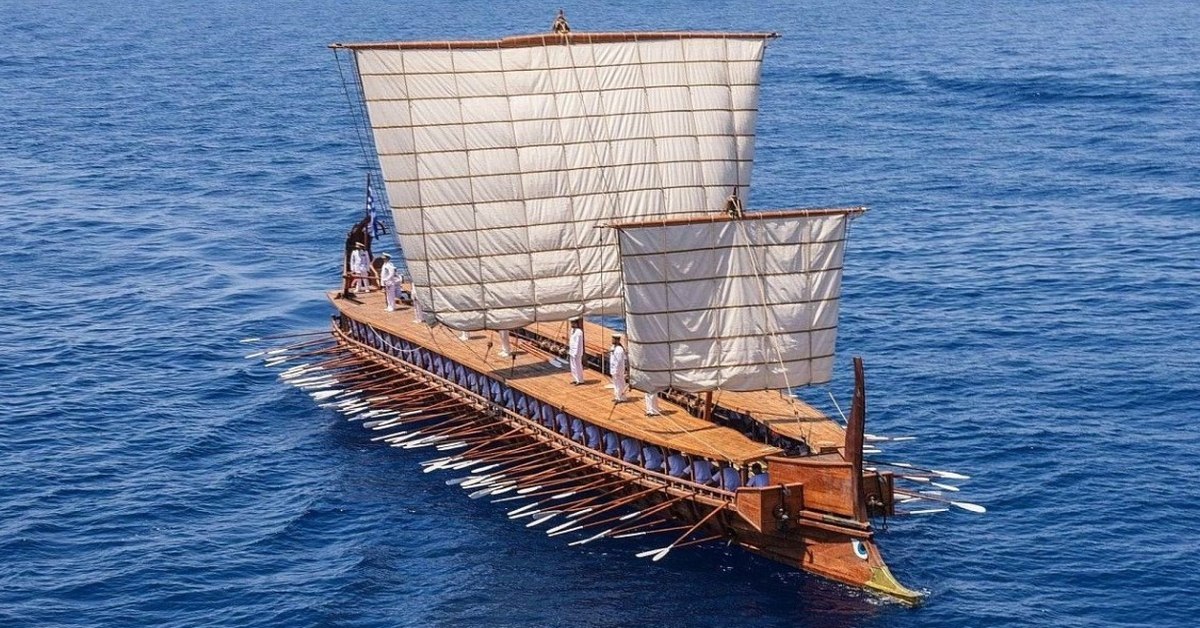The trireme once ruled the waves of antiquity – here’s what it looks like in real life.

The ancient Greek warships called triremes were the most advanced and powerful naval technology of their time, capable of reaching speeds of over 9 knots and maneuvering with agility and precision. They were also the main weapon of Athens, the leading maritime power of the classical era, which dominated the Mediterranean Sea with its fleet of hundreds of triremes.
But how do we know so much about these ancient ships, when none of them have survived to this day? The answer is experimental archaeology, a method that involves reconstructing and testing historical artifacts based on available evidence. One of the most remarkable examples of experimental archaeology is Olympias, a reconstruction of an ancient Athenian trireme that was built and launched in the late 1980s.

Olympias is not just a replica, but a commissioned ship in the Hellenic Navy of Greece, the only vessel of its kind in any of the world’s navies. It was built to drawings by the naval architect John F. Coates, who collaborated with the historian J. S. Morrison and the classics teacher Charles Willink, following a long debate in The Times newspaper about the design and performance of triremes. The project was financed by the Hellenic Navy and donors such as Frank Welsh, a banker, writer and trireme enthusiast.

The construction of Olympias took place from 1985 to 1987 by a shipbuilder in Piraeus, using traditional materials and techniques as much as possible. The ship was made from Douglas fir with tenons of Virginia oak, with a bronze bow ram weighing 200 kg (440 lbs).
The most challenging part was the rigging of the three banks of oars, each with 57 oarsmen, who had to row in perfect coordination to propel the ship. The original ship had ten spearmen and four archers as armament.

Olympias underwent several sea trials from 1987 to 1994, with volunteer crews from different countries and backgrounds. The results were impressive: Olympias achieved a speed of 9 knots and was able to perform 180 degree turns within one minute, in an arc no wider than two and a half ship-lengths.
These results confirmed that ancient historians like Thucydides were not exaggerating about the capabilities of triremes, and also provided valuable insights into the social and psychological aspects of life on board.

Olympias was transported to Britain in 1993, to take part in events celebrating the 2,500 years since the beginning of democracy. It also participated in several naval parades and ceremonies in Greece and abroad. In 2004, she played a ceremonial role in transporting the Olympic Flame from the port of Keratsini to the primary port of Piraeus, marking a significant moment as the Olympic Torch Relay made its way to Athens for the 2004 Summer Olympics.
Today, Olympias serves as an exhibit in dry dock at Palaio Faliro, near Athens, where it can be visited by the public. It is also used for educational purposes and cultural events.

Olympias is a unique example of how experimental archaeology can bring history to life and enhance our understanding of ancient civilizations. It is also a testament to the ingenuity and skill of the ancient Greeks, who created one of the most formidable naval machines ever known.
Sources: 1, 2, 3
